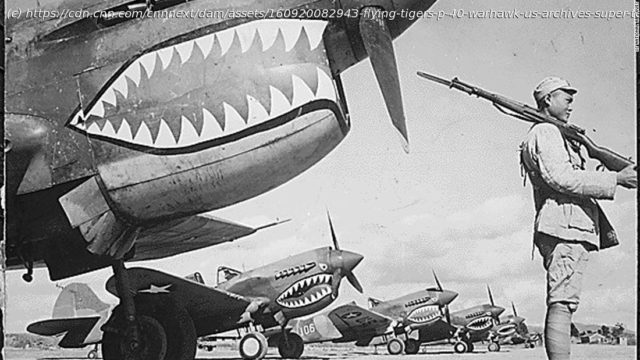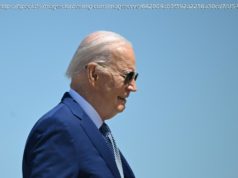A few hundred of Americans became the heroes of China in 1941– flying warplanes featured a tooth-filled shark on their nose, destroying nearly 500 Japanese planes during World War II.
Those American pilots, mechanics and support personnel became members of the American Volunteer Group (AVG), later known as the Flying Tigers.
The group’s American-made warplanes featured the gaping, tooth-filled mouth of a shark on their nose, a fearsome symbol still used on the US Air Force’s A-10 ground-attack jets to this day.
The nose’s symbolic fierceness was backed up by its pilots in combat. The Flying Tigers are credited with destroying as many as 497 Japanese planes at a cost of only 73 of their own.
Today, even with US-China tensions rising, those American mercenaries are still revered in China, with memorial parks dedicated to them and their exploits.
“China always remembers the contribution and sacrifice made to it by the United States and the American people during the World War II,” says an entry on the Flying Tigers memorial page of China’s state-run newspaper People’s Daily Online.
The formation of the Flying Tigers
When these Americans arrived in China in 1941, the country was very different from the China we know today. Leader Chiang Kai-shek, a revolutionary who split with the Communist Party, was able to loosely unite the country’s warlords under a central government.
In the late 1930s, China had been invaded by the armies of Imperial Japan and was struggling to withstand its better equipped and unified foe. Japan was virtually unopposed in the air, able to bomb Chinese cities at will.
Faced with that dire situation, the Chiang government hired American Claire Chennault, a retired US Army captain, to form an air force.
He spent his first few years in the job putting together an air raid warning network and building airbases across China, according to the Flying Tigers’ official website. Then in 1940, he was dispatched to the United States — still a neutral party in World War II — to find pilots and planes that could defend China against the Japanese air force.
With good contacts in the administration of US President Franklin Delano Roosevelt and a budget that could pay Americans as much as three times what they could earn in the US military, Chennault was able to get the fliers he needed.
The planes posed a bit more of a problem. The US was making them in large numbers, but they were destined for Britain to use against Germany or for US forces, amid fears that the war in Europe would soon suck in the US.
A deal was secured to get 100 Curtiss P-40B fighters built for Britain sent to China instead. For its hardship, Britain was promised a new and better model about to go to the assembly line.
In his memoirs, Chennault wrote that the P-40s purchased by China were lacking some important features, including a modern gun sight.
“The combat record of the First American Volunteer Group in China is even more remarkable because its pilots were aiming their guns through a crude, homemade, ring-and-post gun sight instead of the more accurate optical sights used by the Air Corps and the Royal Air Force,” he wrote.
What the P-40 lacked in ability, Chennault made up for in tactics, having the AVG pilots dive from a high position and unleash their heavy machine guns on the structurally weaker but more maneuverable Japanese planes.
In a low, twisting, turning dogfight, the P-40 would lose.
A ragtag group of fliers
The pilots Chennault had to teach were far from the cream of the crop.
Ninety-nine fliers, along with support personnel, made the trip to China in the fall of 1941, according to the US Defense Department history.
Some were fresh out of flight school, others flew lumbering flying boats or were ferry pilots for large bombers. They signed up for the Far East adventure to make a lot of money, to find lost girlfriends or because they were simply bored.
Perhaps the best known of the Flying Tigers, US Marine aviator Greg Boyington — around whom the 1970’s TV show “Black Sheep Squadron” was based — was in it for the money.
“Having gone through a painful divorce and responsible for an ex-wife and several small children, he had ruined his credit and incurred substantial debt, and the Marine Corps had ordered him to submit a monthly report to his commander on how he accounted for his pay in settling those debts,” according to a US Defense Department history of the group.
With such a disparate group of fliers, Chennault had to teach them how to be fighter pilots — and to fight as a group — essentially from scratch.






